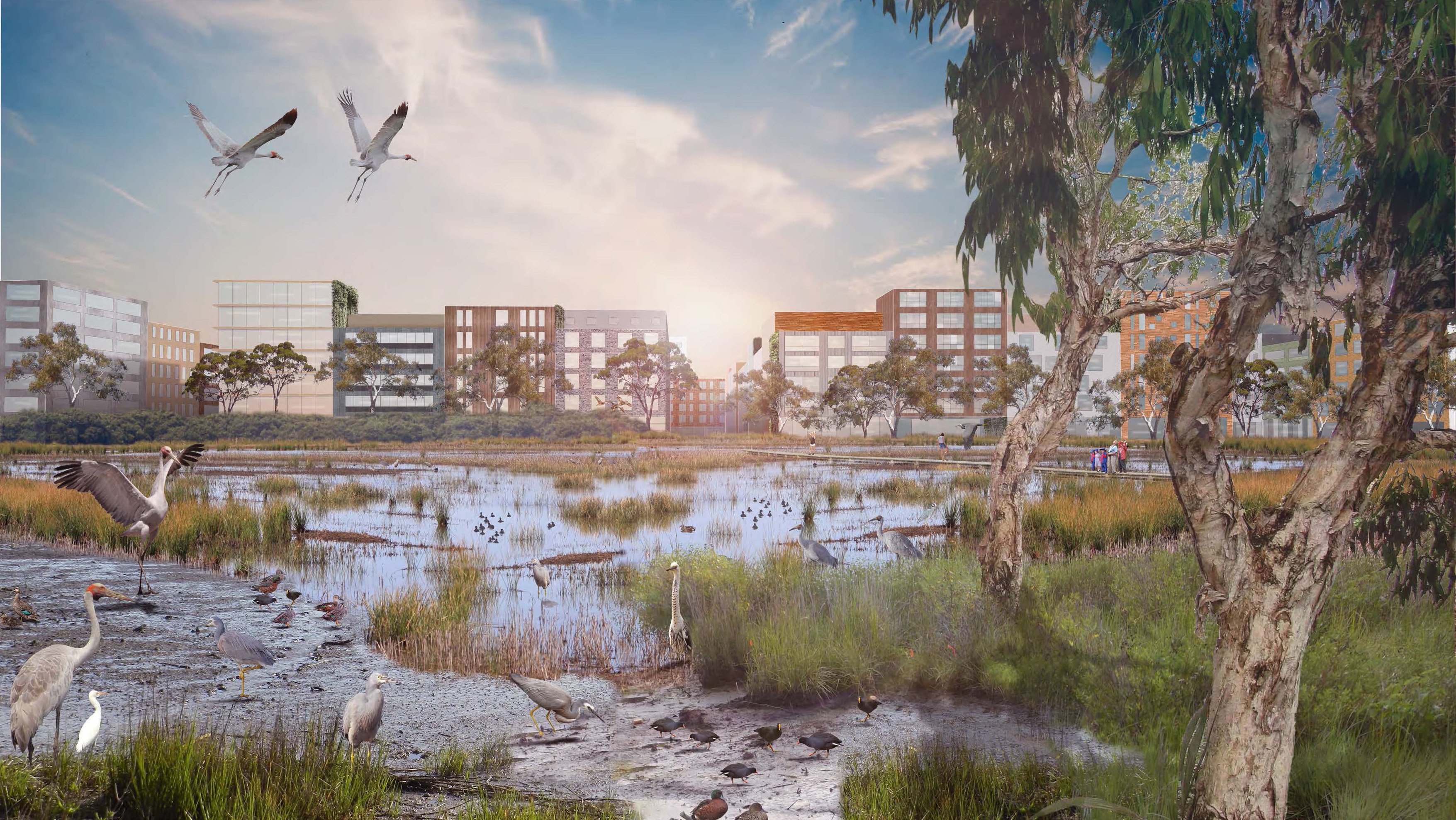Climate change presents critical challenges for future development, sustainability and resilience across Melbourne. Here, our experts offer insights on how we can better prepare our outer suburbs.
Daily maximum temperatures in Greater Melbourne are expected to increase to nearly 1.6°C by the 2030s.
This presents significant challenges for the city’s outer suburbs, which are already at risk from drought, heatwaves, storms and bushfires.
RMIT experts break down the key opportunities – from urban planning to water and waste management –for promoting climate resilience across the city, aligned with the UN Sustainable Development Goals.
Increase urban density
Higher urban density and mixed-use development can reduce Melbourne’s environmental footprint and provide residents with better access to services and amenities, enhancing liveability and reducing the need to travel.
Providing higher density housing in established areas close to jobs and services will also reduce the need for new housing on the urban fringe.
Enhance access to public transport and active travel
Any new residential areas should be provided with a full array of local retail and community services, as well as public transport access within walking distance to encourage active travel for people’s health.
Incentives should be considered to encourage shared vehicles and micro-mobility options in outer-suburban and new growth areas.

Promoting biodiversity-sensitive urban design in urban renewal projects enhances liveability and minimises tree canopy and green space loss which are essential to urban cooling. Image from RMIT’s ICON Science.
Preserve and enhance biodiversity
The benefits of explicitly including biodiversity-sensitive urban design in planning guidelines and strategic assessments range from increased carbon absorption, cooling urban temperatures and flood mitigation, to sustaining urban wildlife and supporting food production on the urban fringe.
Green infrastructure like green roofs and green walls would help mitigate the urban heat island effect and reduce energy use, as well as delivering economic benefits from greater worker productivity, increased amenity of commercial areas and higher property values.
Mitigate bushfire risk
A more systematic planning regime can take into account the cumulative effects of individual land use decisions in bushfir- risk areas, with authority to make broader planning decisions to manage fire risk.
We need a whole-of-government approach that spans emergency management, land use planning, provision of safe and resilient infrastructure, education, public health and community development.
Boost energy efficiency
More ambitious energy efficiency and renewable energy standards can ensure that new buildings – particularly high-density housing – can help achieve high standards of comfort, safety, equity, resilience and energy affordability.
Policies and incentives should also seek to provide vulnerable households and tenants access to energy cost-saving technologies in healthy, safe, resilient buildings.

We can boost our energy efficiency by ensuring housing design guidelines and standards address thermal performance and solar energy for improved summer performance.
Enhance water security
Water-sensitive urban design – such as property or precinct-scale water conservation, minimising wastewater flow, stormwater management and flood mitigation – can reduce both water consumption and vulnerability to extreme weather events.
Decentralised water technologies should be deployed, supported by public education campaigns to increase awareness of the long-term water conservation and cost-saving benefits.
Adopt a whole of life-cycle approach to materials and waste
Construction and demolition waste accounts for around one-third of all waste generated in the Australian economy, with a similar proportion going to landfill.
Iterative collaboration between architects, consultants and construction companies can help reduce this waste, particularly through the use of energy and resource performance tools.
A whole of life-cycle approach to construction is essential to account for the true environmental impact of the production, transport and assembly of construction materials, over the lifetime of a building.
The critical policy brief Climate Change Mitigation and Adaption in Suburban Melbourne has been written by researchers affiliated with the Urban Futures Enabling Capability Platform, as part of RMIT’s Greener Start Initiative.
For more insights and recommendations see the full policy brief here.
Story: Chanel Koeleman





